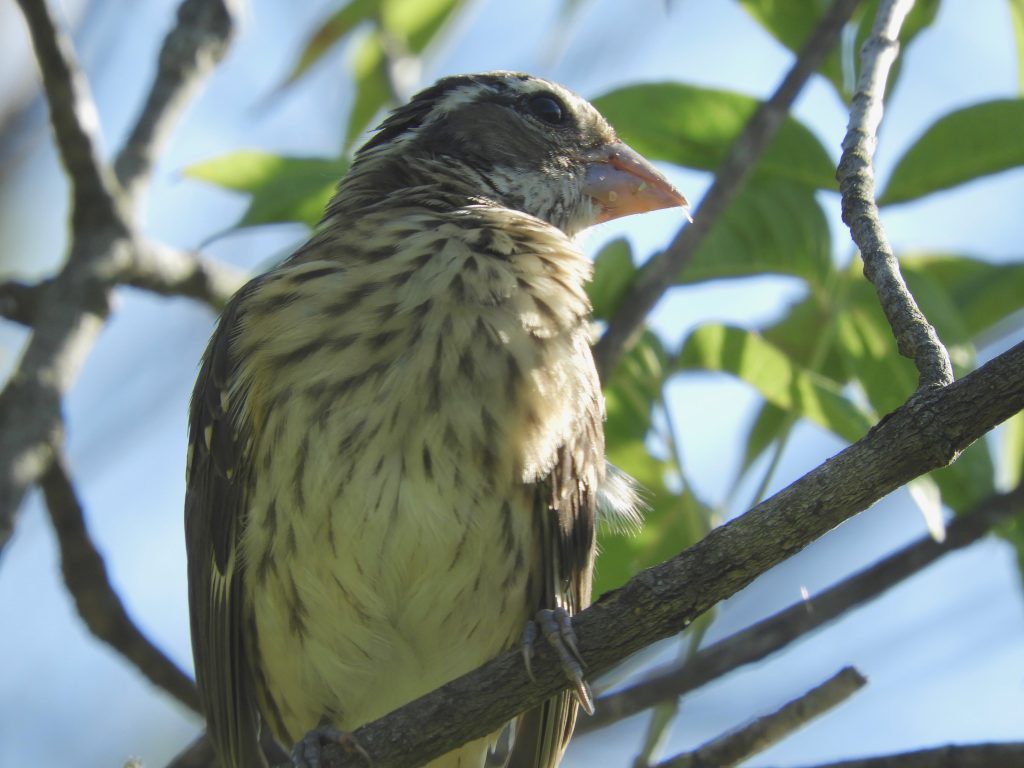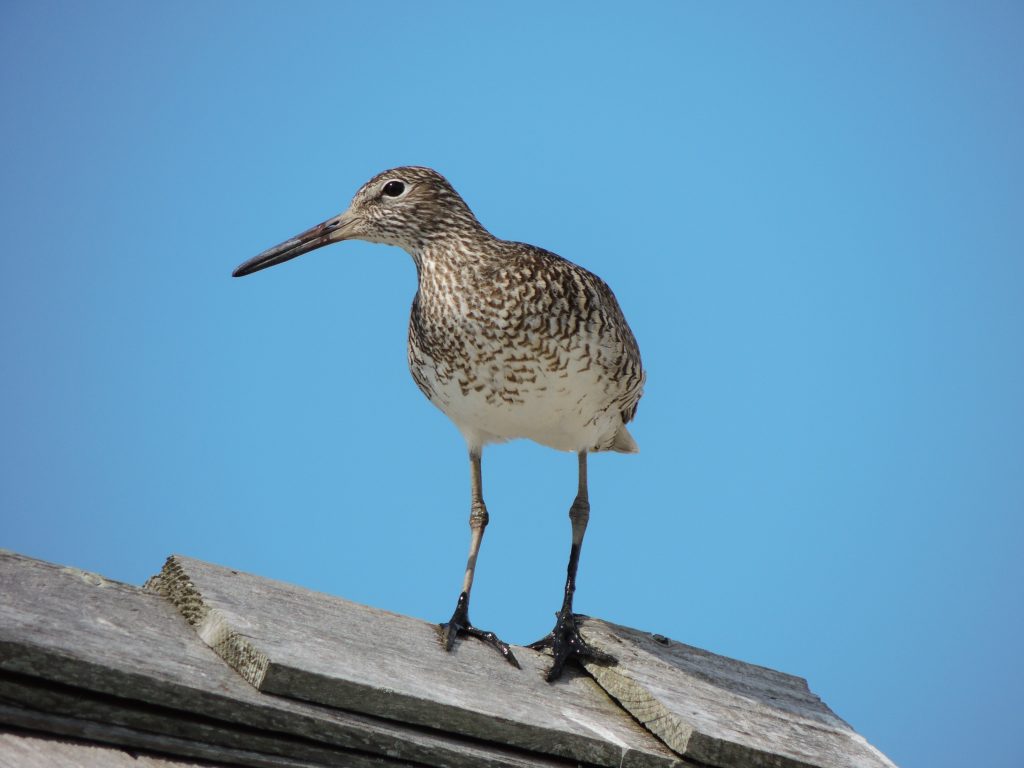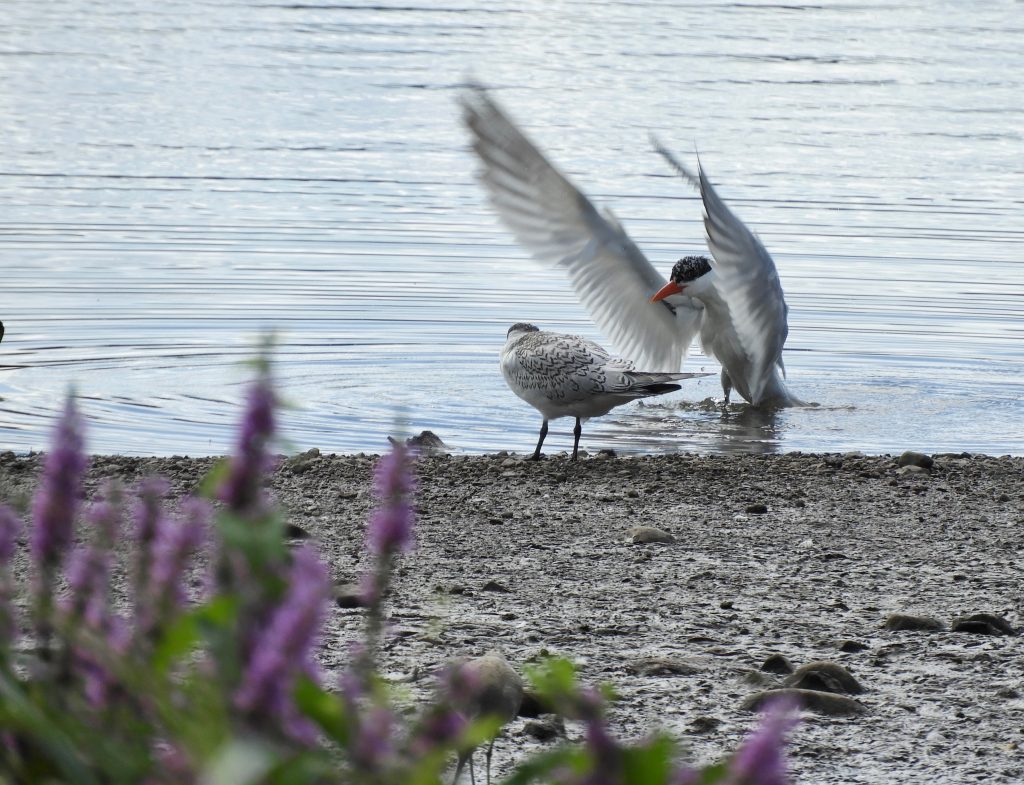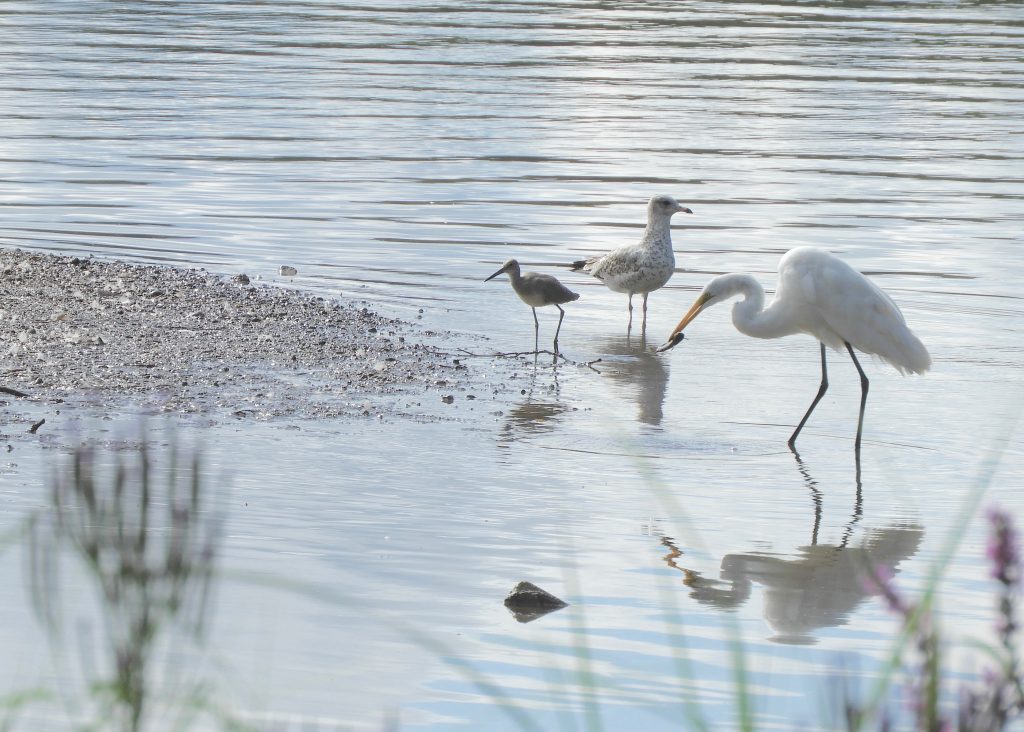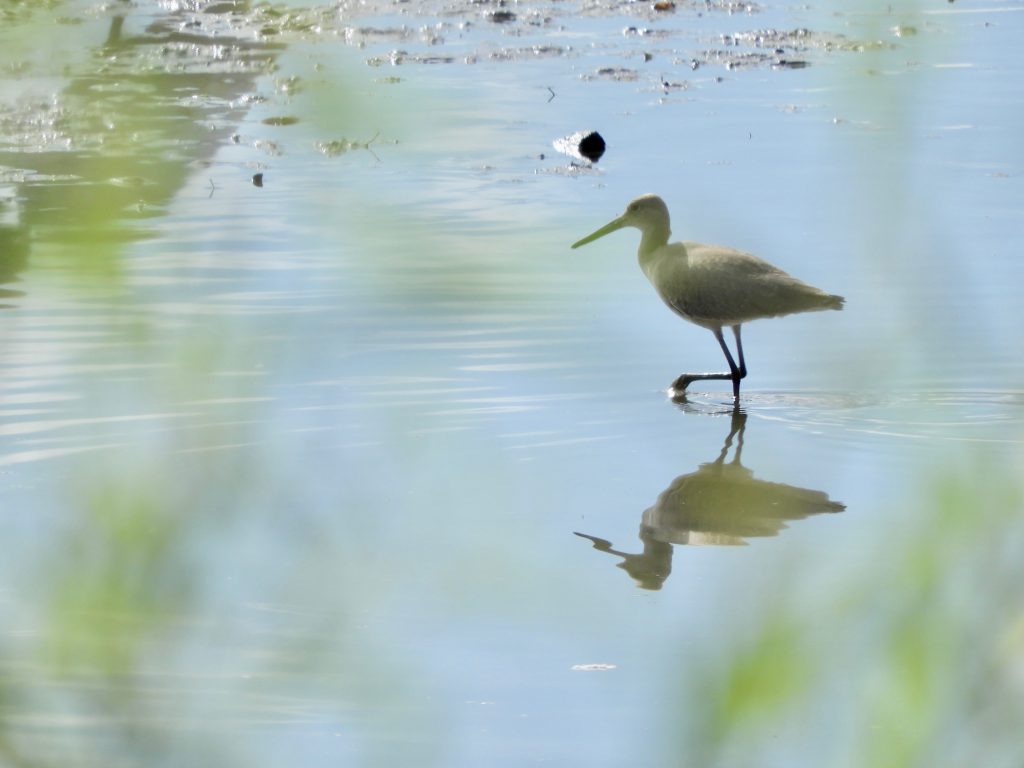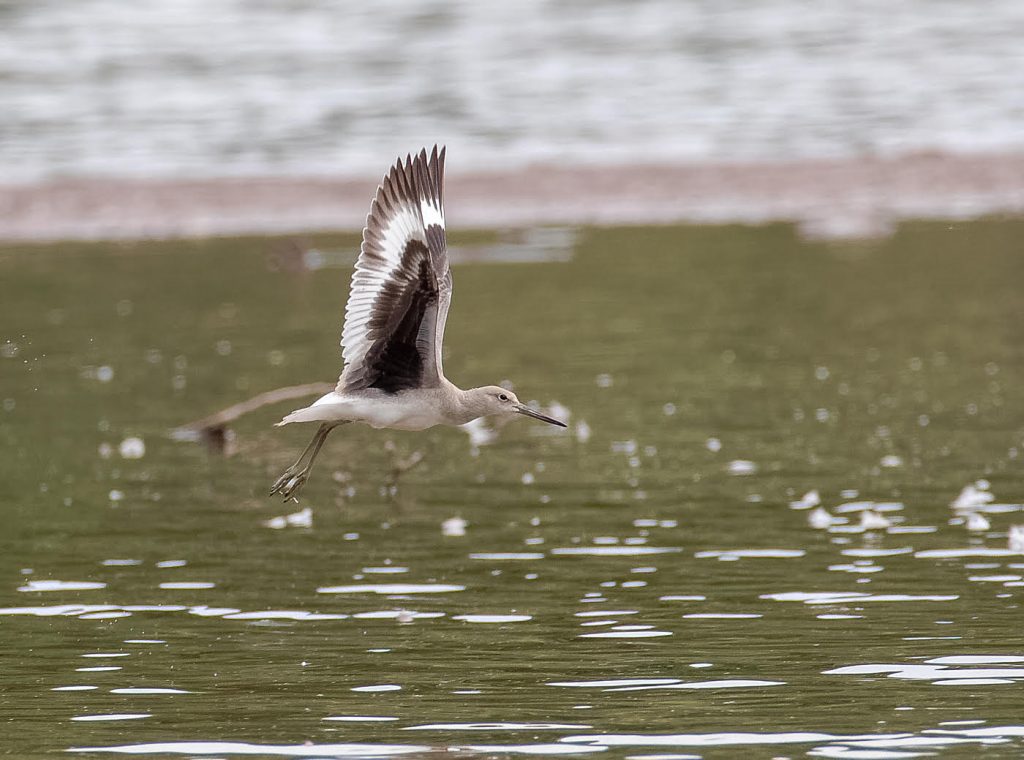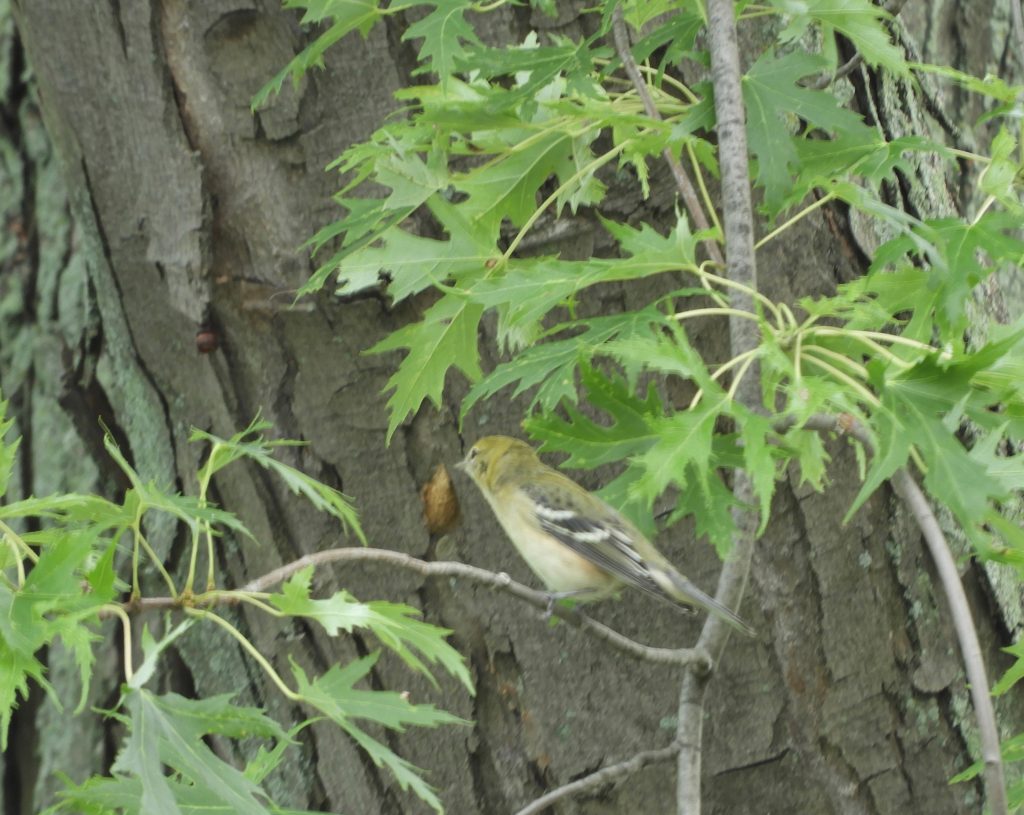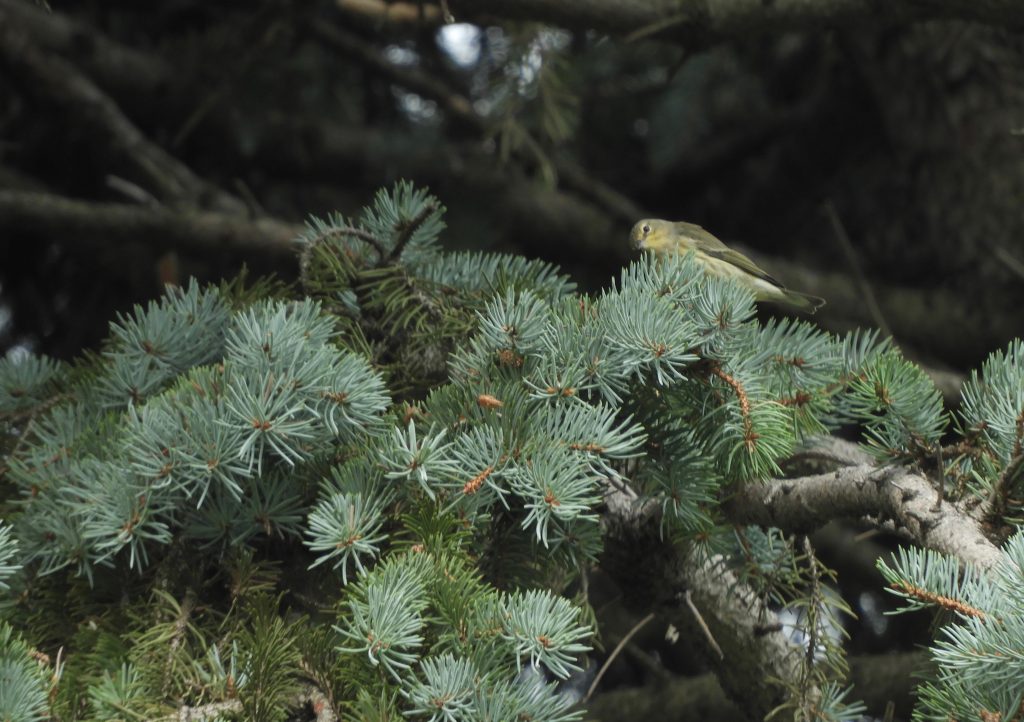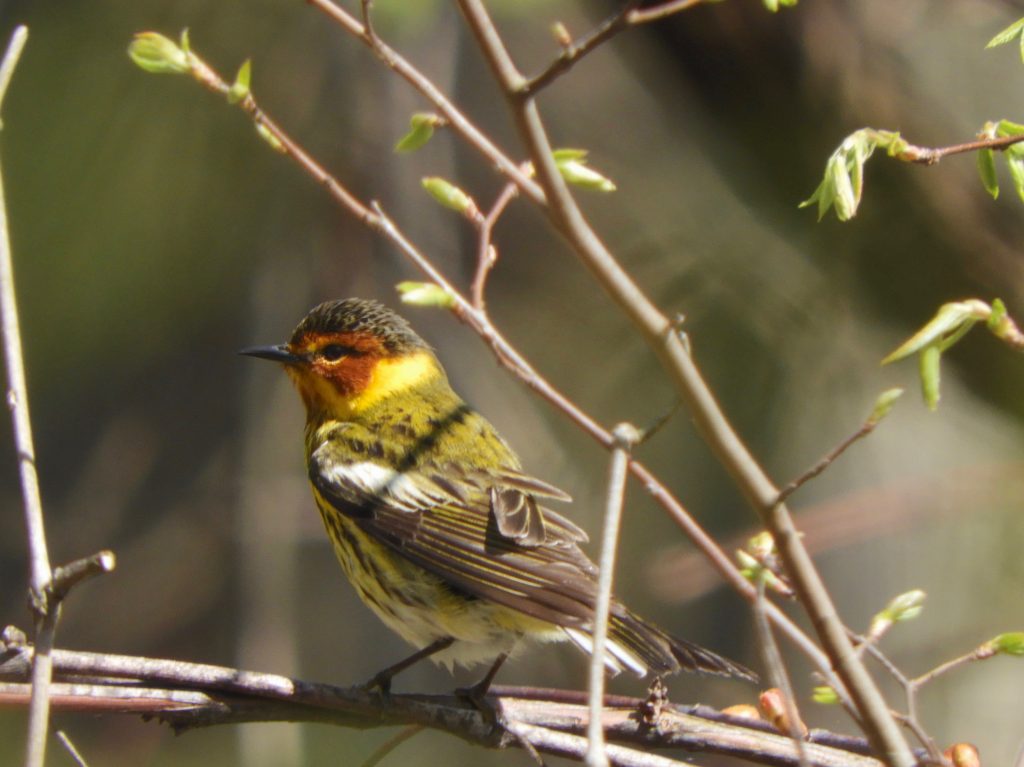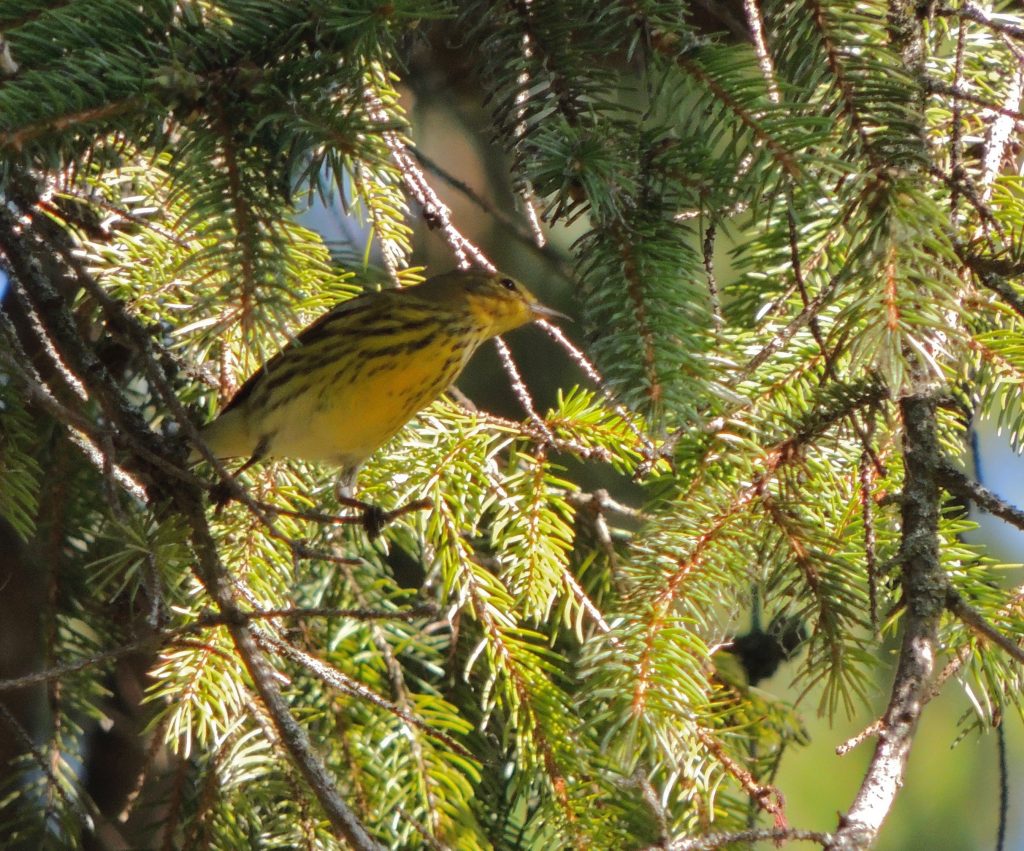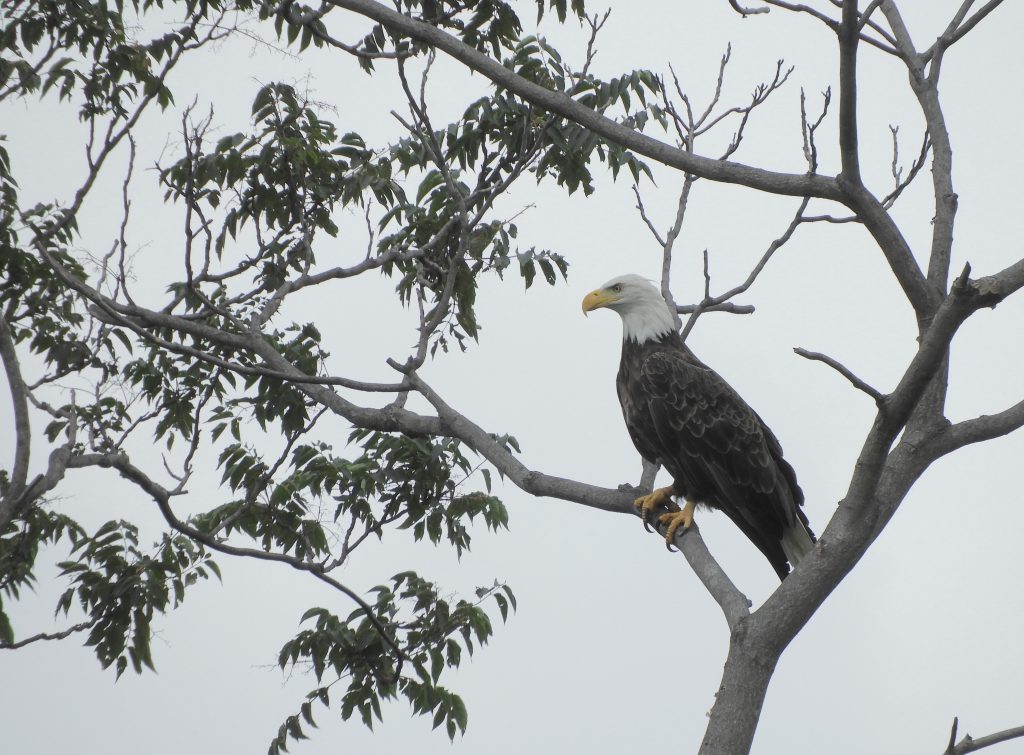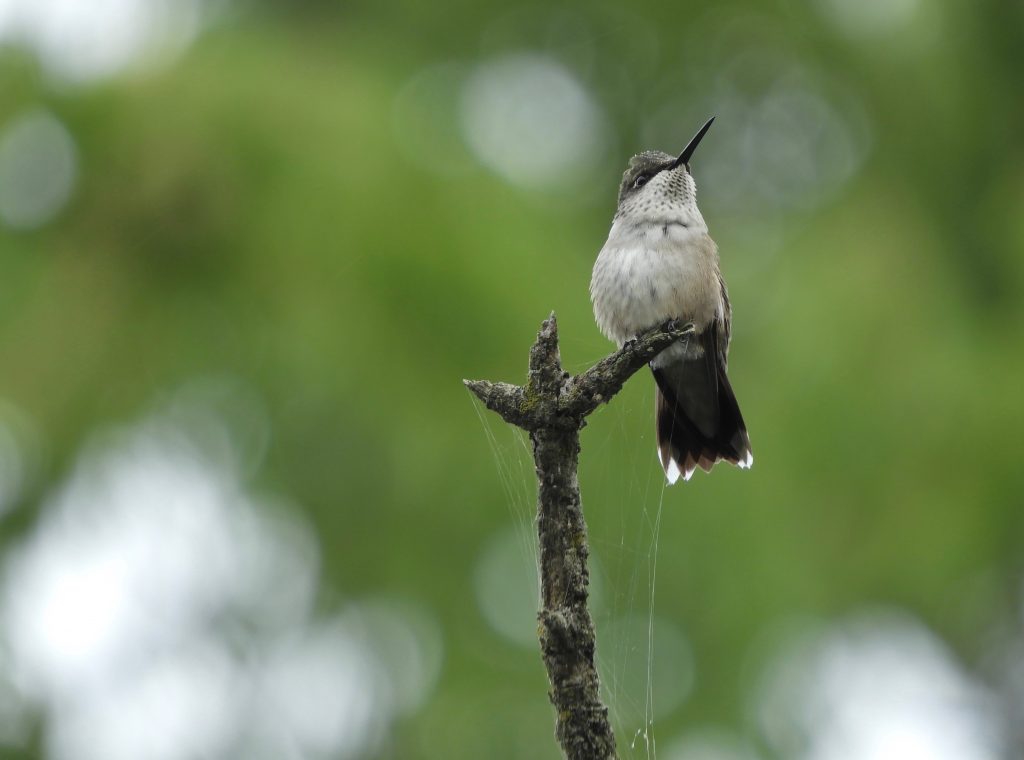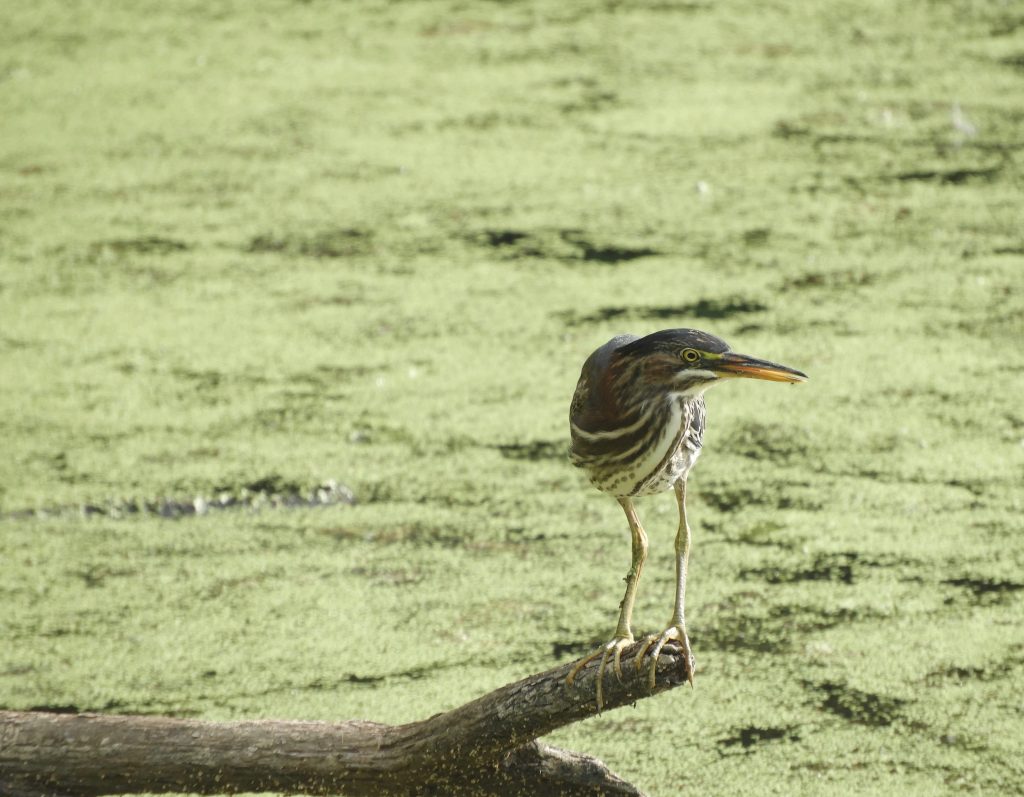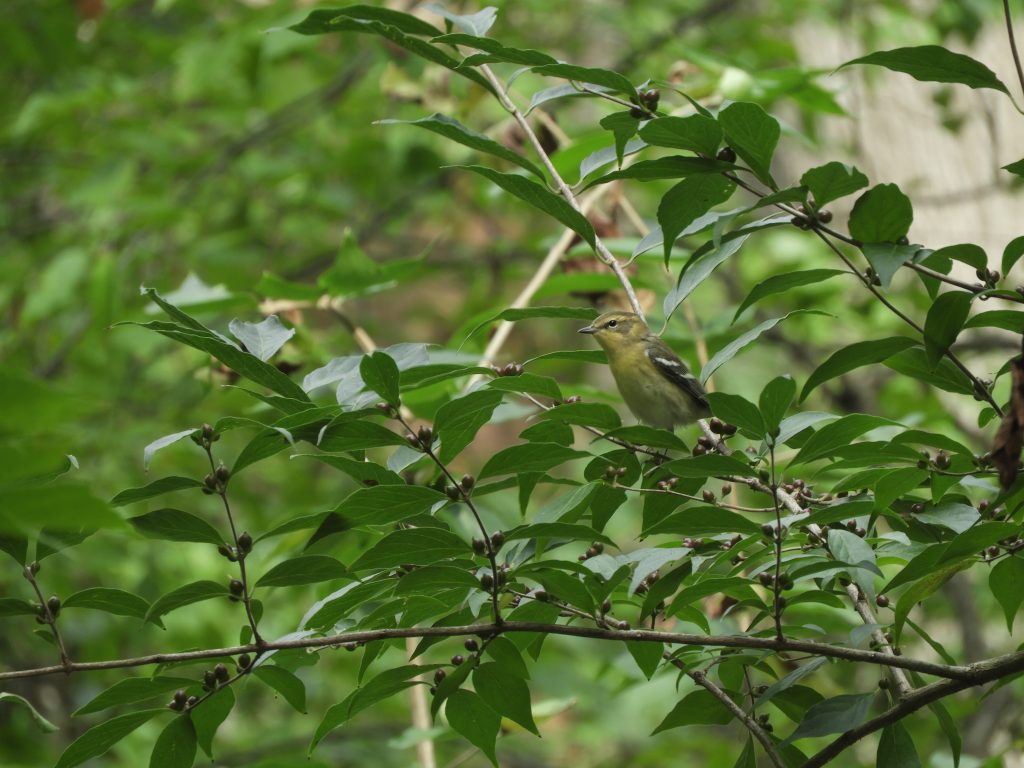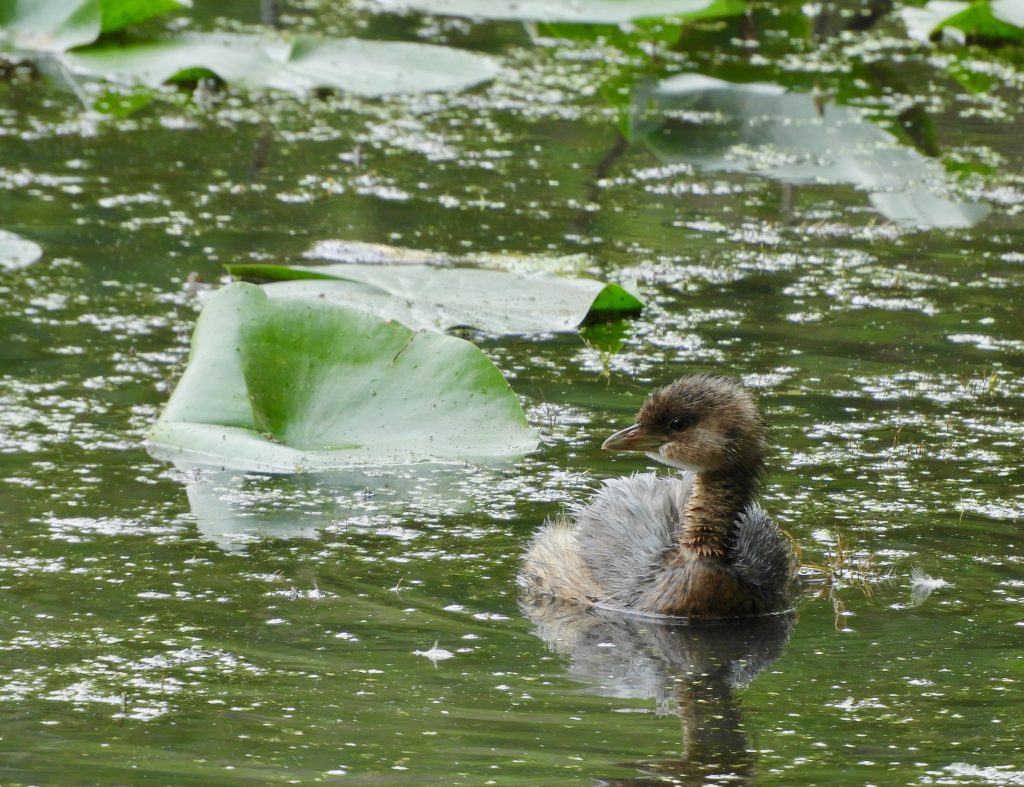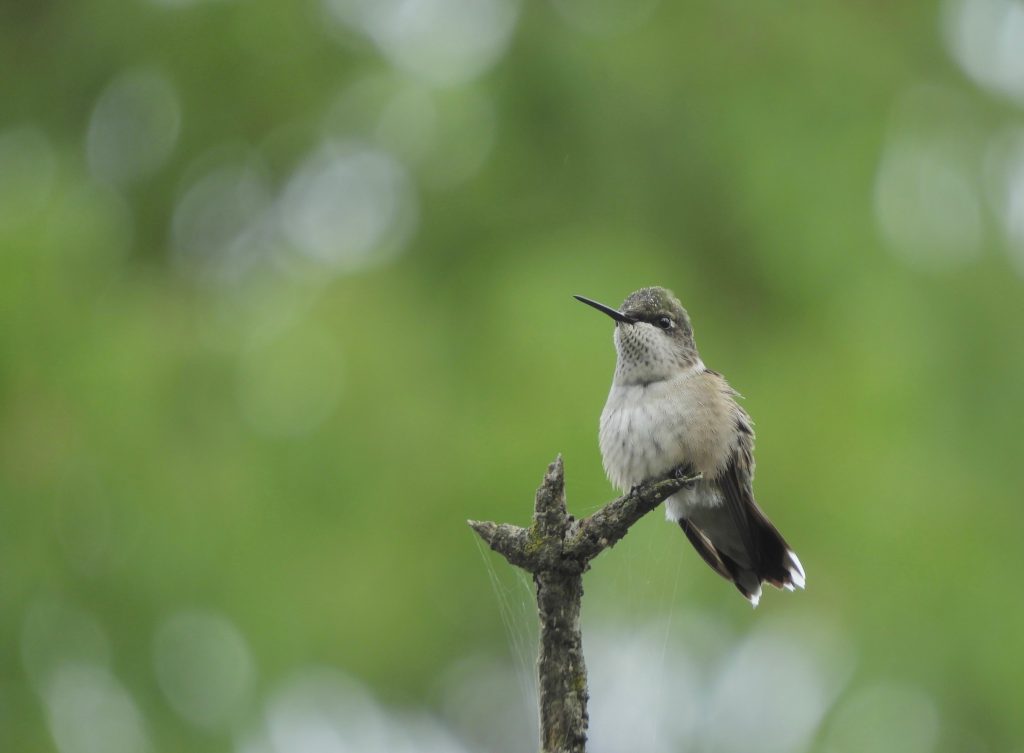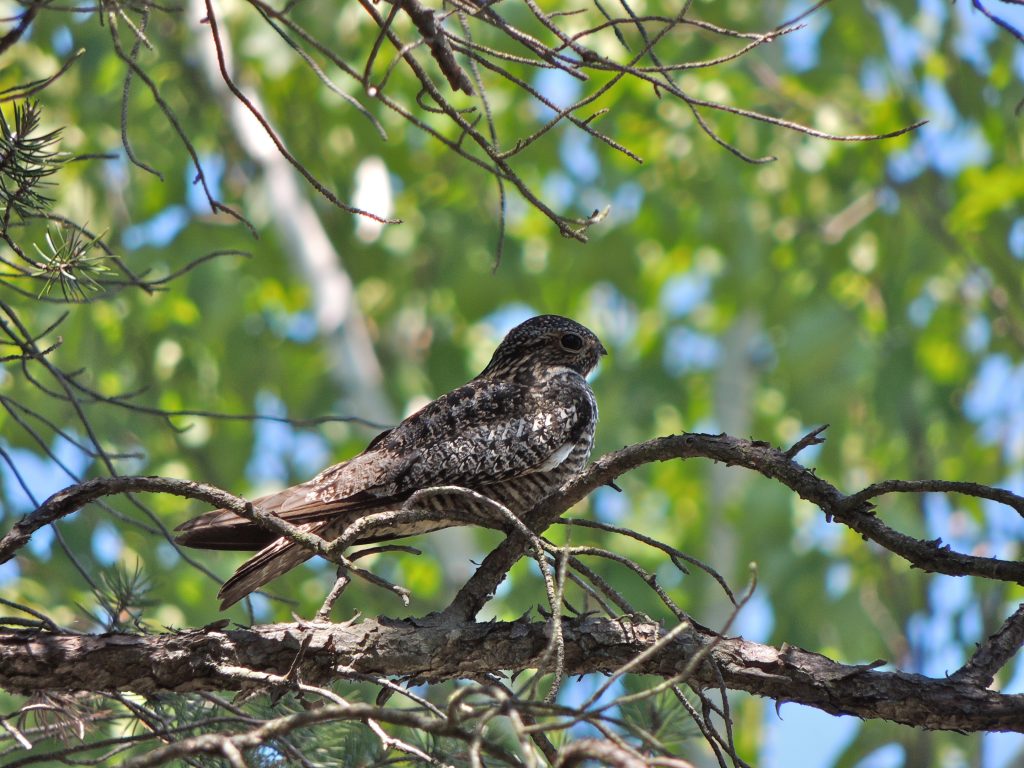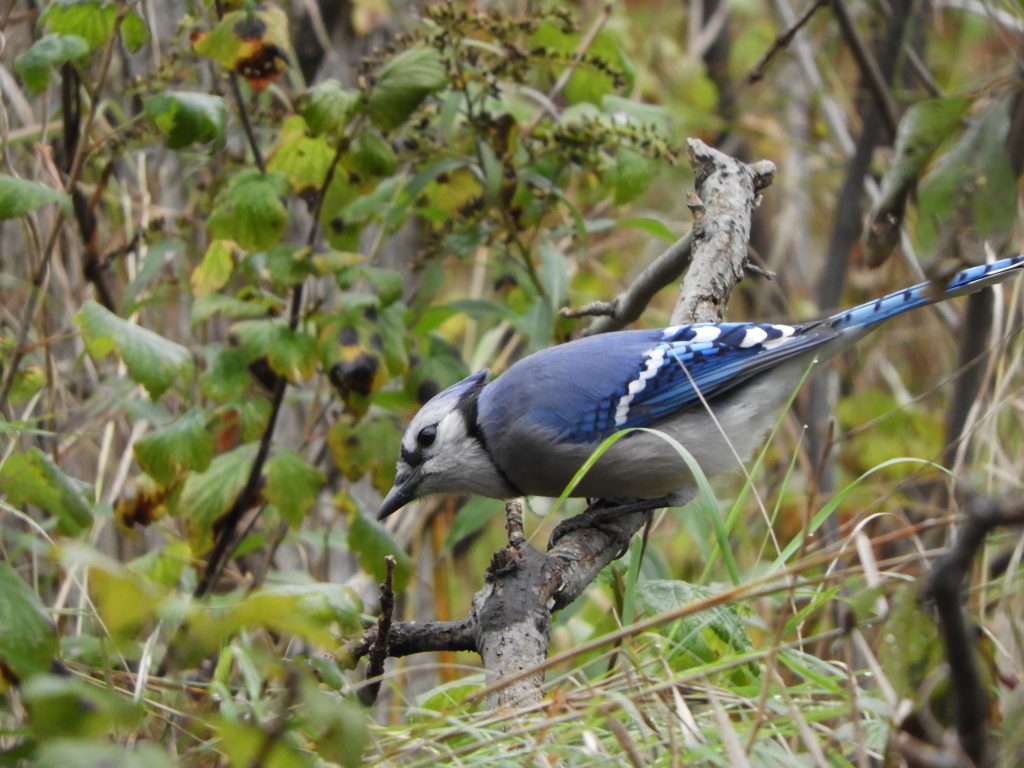
RBG. Hendrie Valley, Burlington ON. September 7th. 2020. Strong winds this morning blew fat rain drops from the trees, left from a riotous and drenching overnight thunderstorm. The natural world was drying out and few other souls ventured out when I walked one of my regular transects. The birding was somewhere between fair and good, small birds like warblers and flycatchers were conspicuously absent, but there were lots to see among larger ones. I watched this belly deep Great Blue Heron patiently stalk and spear a couple of cold, wriggling, protein packages.
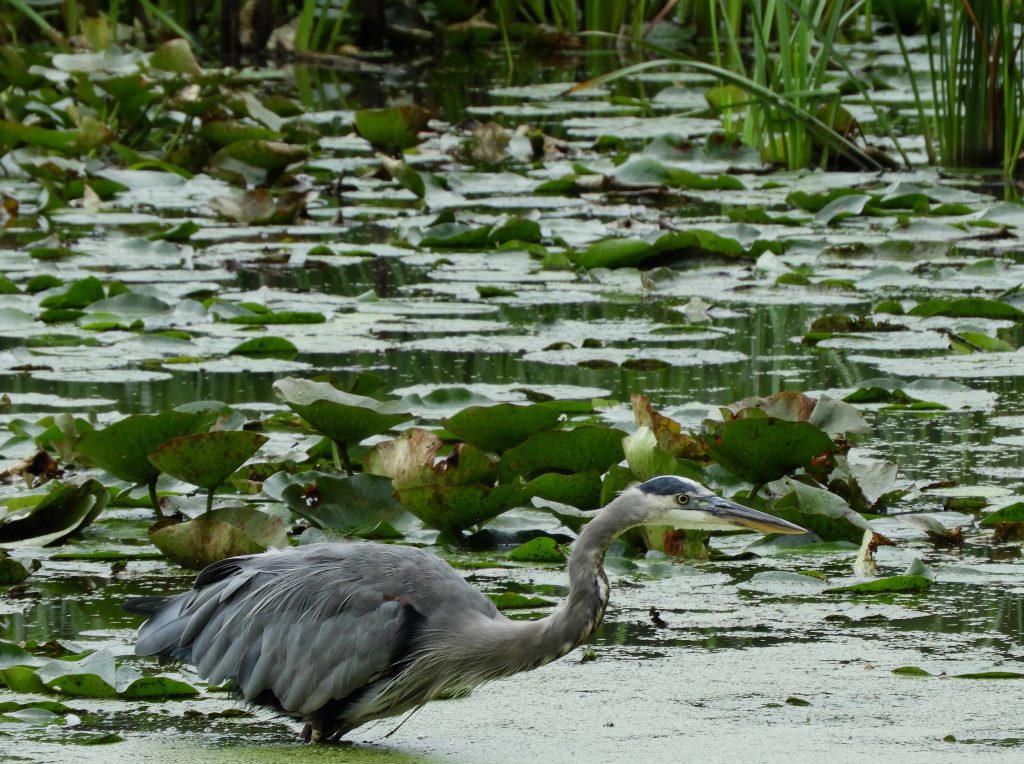
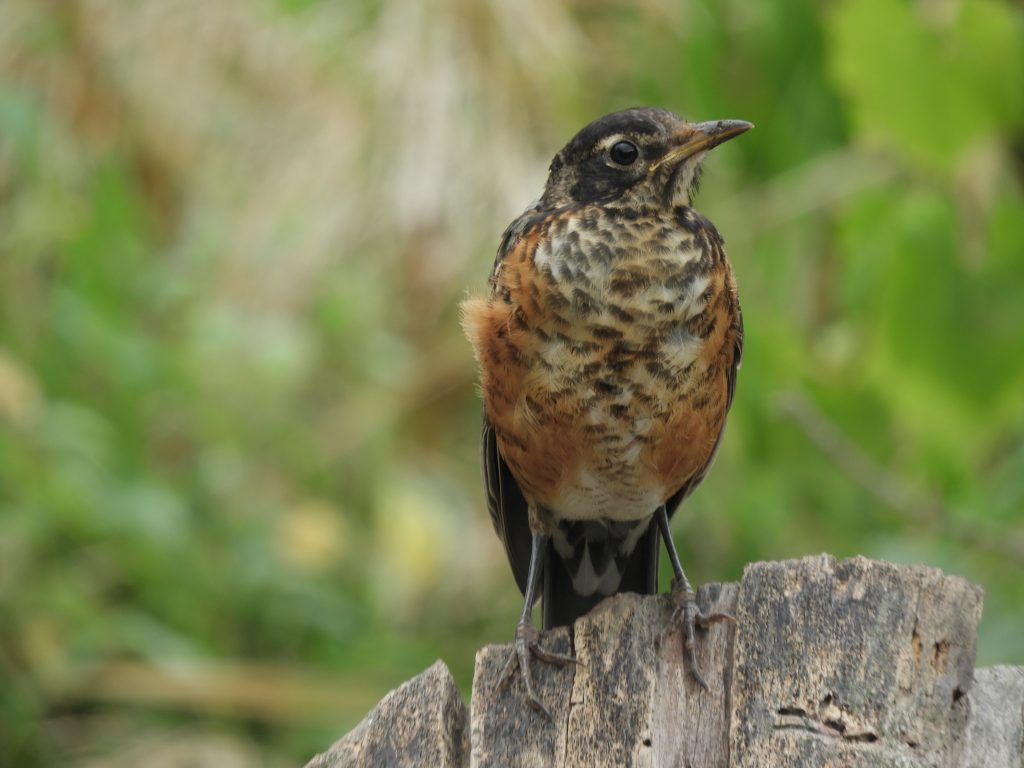
Despite noting many speckle-breasted juvenile American Robins, a Black and White Warbler, two Ospreys a few young Rose–breasted Grosbeaks and a Warbling Vireo, easily the highlight of the day was watching and puzzling over the combative behaviour of a group of about 8-12 Blue Jays and a single Merlin. It was an avian version of that childhood game; What time is it Mr. Wolf? Except that Mr. Wolf, the Merlin in this case, is a predator who lives on a diet of smaller birds snatched out of the air in fast pursuit. A Blue Jay would make a good meal.
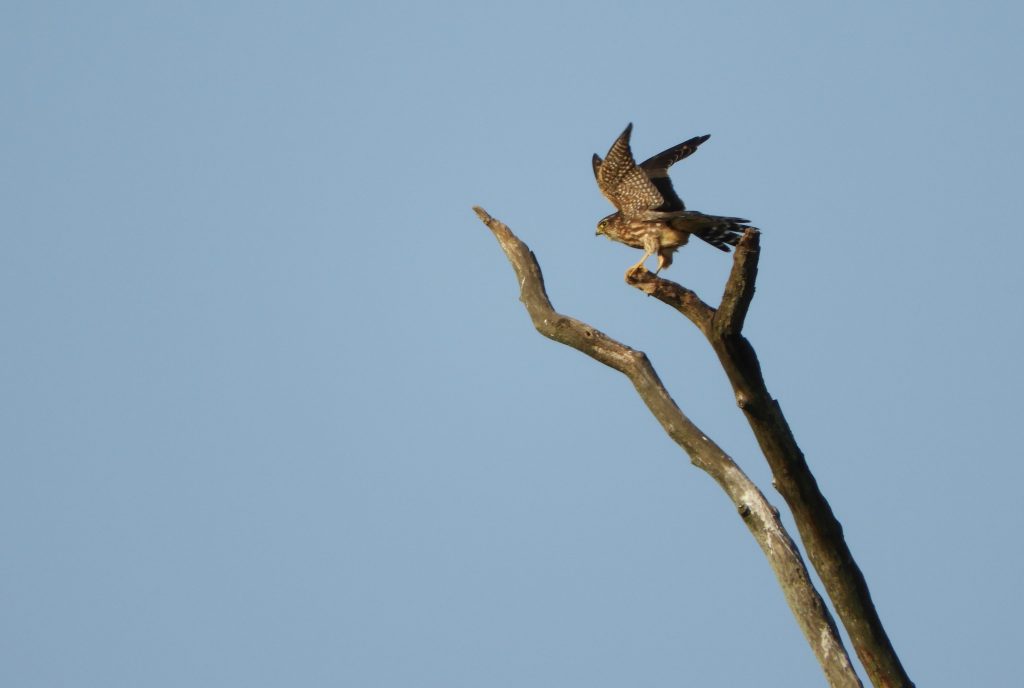
The play went like this: The Blue Jays, as teasers, perched conspicuously distributed around the high branches of a bare or sparsely-leaved tree, the Merlin swooped in, took up a strategic perch, surveyed the meal opportunities and then made a dive or maybe a feint for one of the teasers. The teasers all scattered, shrieking like 7-year olds, and then promptly reconvened, often in the same tree. The Merlin returned as before but empty-handed and they did it all over again and again and again.
This is not the first time I’ve witnessed this cat and mouse game and I wonder what this is all about. Could it be that they’re all young birds, hatched this year, engaged in mutual learning; albeit with the possibility of a bad outcome for one of them.
Blue Jays were around in the valley in huge numbers today, a big migratory pulse I’m certain. The Merlin looked very crisp, in fine fettle. I’m sure it would soon find a meal not necessarily a playmate. My Birds of the Day.
